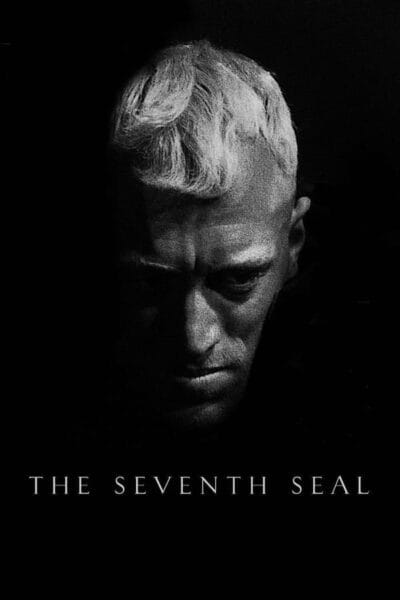Ingmar Bergman was one of the greatest filmmakers of all time.
His films are universally praised for their deep, emotionally charged cinematography, and he is renowned for his ability to create powerful stories that stay with viewers long after they have finished watching them. Bergman’s work has had a profound impact on cinema, inspiring countless filmmakers and capturing the hearts and minds of audiences around the world.
In this article, we will explore some of Ingmar Bergman’s most acclaimed and beloved films. We will discuss the director’s cinematic vision, examining his signature style and unique approach to storytelling. We will also take a look at how Bergman’s films continue to shape our understanding of cinema today.
So let us journey into the masterful work of Ingmar Bergman – a journey that is sure to be filled with thought-provoking insight and awe-inspiring imagery.
Early Life and Career Beginnings: How Bergman Developed His Cinematic Style

One of the most iconic and celebrated filmmakers of all time, Ingmar Bergman was born in 1918 in Uppsala, Sweden. He initially studied art and literature at Stockholm University before beginning to pursue his dream of writing and directing. His first feature film was entitled Crisis and released in 1946, but it was the distinctly unique cinematic signatures his later works conjured that would lead him to become a celebrated master in the industry.
Bergman typically wrote all of his own films—like 1955’s Smiles Of A Summer Night, which won him an Academy Award for Best Foreign Language Film—in addition to directing them himself. His work often explored themes of morality and faith while exploring the intimate depths of human conflict, emotions, relationships, and other psychological elements that have come to define his name as a revered genius in the world of cinema. Many films focused on strong female protagonists as well as complex interpersonal dynamics between them and other characters. Bergman’s innovative techniques and prolific output allowed him to become an influential figure in a field he helped evolve over the course of his career.
Bergman’s Breakthrough and Golden Years: Smiles of a Summer Night and the Seventh Seal
Ingmar Bergman’s filmography has countless highlights, but it’s his breakthrough 1957 film Smiles of a Summer Night that many recognize as his true masterwork.
The film, which won him the Best Foreign Language Film Oscar in 1958, is a classic romantic comedy set in 19th century Sweden. Through intertwining storylines, Bergman introduces us to a cast of characters experiencing the ups and downs of love in their own unique ways.
Two years later, Bergman released his iconic masterpiece The Seventh Seal, a vivid meditation on life, death, and faith set during the height of the Black Plague. The film follows an aging knight on a search for answers within himself that he can’t find from religion. His eventual encounters with Death himself made an indelible impression on viewers around the world and cemented Bergman’s status as a cinematic genius.
These two films would launch what is known today as Bergman’s “golden years,” where he went on to produce some of the greatest films ever made such as Wild Strawberries (1957) and Persona (1966). These works continue to influence filmmakers in their craft today and will be remembered for generations to come.
Exploring Faith and Existentialism: The Silence and Winter Light

Ingmar Bergman’s work often explores themes of faith and existentialism through intensely intimate cinematography. This is exquisitely exemplified in both The Silence (1963) and Winter Light (1962).
In The Silence, two sisters visit an unnamed foreign city where the lack of conversation creates a haunting atmosphere. Through this cinematic masterpiece, Bergman encourages viewers to explore the meaning of life without language. This is further compounded by the silence between siblings that communicates a sense of alienation and deep loneliness of their spiritual journeys.
In Winter Light, genuine enquiries about faith and divine intervention are posed. As with many of his films, Bergman creates a palpably tense atmosphere, as the pastor Tomas Ericsson reflects on his fading faith and struggles with his understanding of God. This film captures an isolated sense of despair amongst its characters as they grapple with unanswered questions surrounding religion.
Both The Silence and Winter Light pave the way for existential reflection into themes such as destiny, suffering, purpose and death. Through these works, Ingmar Bergman manages to convey powerful messages about faith, alienation and hope in spite of uncertainty.
Family, Relationships and Psychological Turmoil: Scenes From a Marriage and Cries and Whispers
When it comes to Ingmar Bergman’s cinema, few of his films are as emotionally charged and riveting as Scenes From a Marriage and Cries and Whispers. Both films explore the intricacies of family dynamics, relationships, and psychological turmoil that can unfold in times of crisis.
In Scenes From a Marriage, Bergman explores the complexities of divorce as seen through the eyes of Marianne (Liv Ullmann) and Johan (Erland Josephson). Marianne is a strong-willed attorney who is determined to make it on her own without her husband while Johan is an aloof professor who spends much of his time away from home. Through their conversations and interactions with one another, viewers are given an intimate look into how two people can come together, separate, and still remain connected in some way.
Cries and Whispers also tackles the difficult subject matter of family relations. The film follows Agnes (Harriet Andersson) who is slowly dying from cancer surrounded by her two sisters Maria (Lena Nyman) and Karin (Ingrid Thulin). The sisters struggle to cope with their loss while negotiating their own complex relationships. Bergman’s use of color symbolism in this film further emphasizes the confusion and emotional pain felt by these characters. As Agnes’ health slowly deteriorates so does the color palette used within each scene, eventually moving from vivid hues to muted tones – signifying her descent into death.
The themes explored in both Scenes from a Marriage and Cries and Whispers remain relevant almost 50 years after their initial release due to Bergman’s uncanny ability to capture human emotion at its most extreme levels – making both films must-sees for any cinephile.
Later Life and Work: Fanny and Alexander and Saraband

Ingmar Bergman’s later life and work are often considered his finest. In 1982, he released Fanny and Alexander, a semi-autobiographical masterpiece that followed two children’s journey towards adulthood and the struggles of their family. The film would go on to win four Academy Awards and four Golden Globe Awards.
He followed this up with Saraband in 2003 – a thematic sequel to Scenes from a Marriage – which was highly praised for its depth and beauty. It featured one of his most iconic performances by actor Erland Josephson, as a retired professor struggling with the pain of mortality.
Bergman’s later films explored themes of faith, mortality, loneliness, identity, and how we measure our worth within society. He continued to explore these ideas in his work until his death in 2007 – making him one of the most prolific filmmakers of all time.
Ingmar Bergman’s Cinematic Legacy and Influence on Contemporary Filmmakers
Ingmar Bergman’s influence on the landscape of cinema is still felt today, by both filmmakers and viewers alike. The filmmaker’s works have left an indelible mark on contemporary cinema with their depth, psychological insight, and expression of the human experience.
To this day, Ingmar Bergman’s films continue to inspire filmmakers from all over the world and his legacy lives on in their work. His exploration of themes like faith and spirituality, as well as his characters’ search for meaning in life, have been echoed in films such as “A Separation” (2011) by Iranian director Asghar Farhadi and “Dancer in the Dark” (2000) by Danish director Lars von Trier.
Moreover, Bergman’s techniques – such as his use of shadows and minimal lighting – are still employed by many filmmakers today. His style of directing with extended takes and minimal dialog has been influential in films like “The Tree of Life” (2011) by American director Terrence Malick, or more recently in Spanish director Pedro Almodóvar’s Academy Award-winning film “The Skin I Live In” (2011).
Bergman’s influence has even stretched beyond narrative films: documentaries exploring his life, such as “Bergman Island” (2004) by Swedish director Marie Nyreröd and “Ingmar Bergman: The Magic Lantern” (1987) by British director Derek Malcolm, have been released to critical acclaim.
Ultimately, Ingmar Bergman has created a cinematic legacy that will live on for generations to come. His films are still as relevant and poignant today as they were when they first premiered decades ago – a true testament to the power of his cinematic vision.
Ingmar Bergman’s influence on cinema is undeniable. Throughout his career, he created a distinct cinematic vision that has left its mark on the world of film. From its expressions of existential angst to its poetic dreamscapes, his films will continue to be studied and celebrated for generations. Bergman’s work stands out as a reminder to explore the depths of human emotion and experience, to find the beauty in the darkness, and to appreciate the art of storytelling. Thanks to his unparalleled cinematic ability, for moviegoers everywhere, Bergman’s vision will remain timeless.

